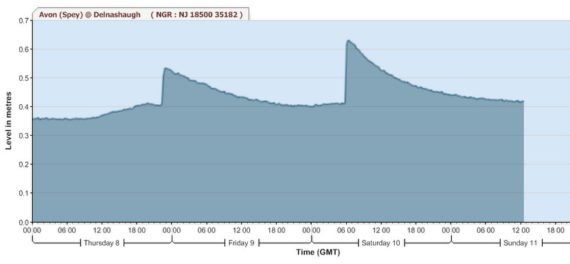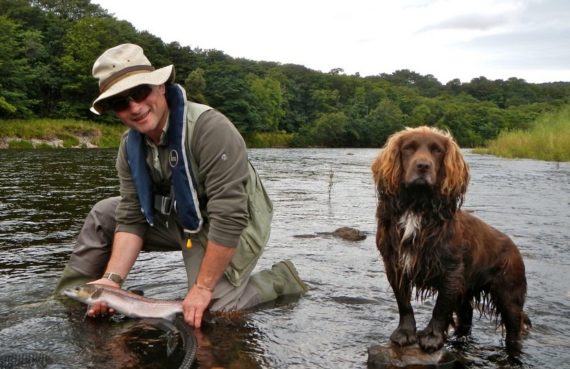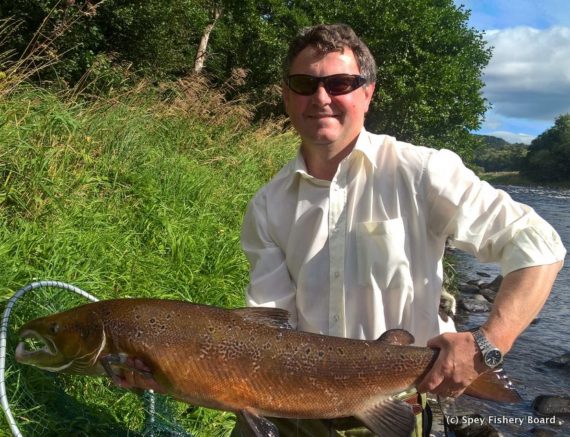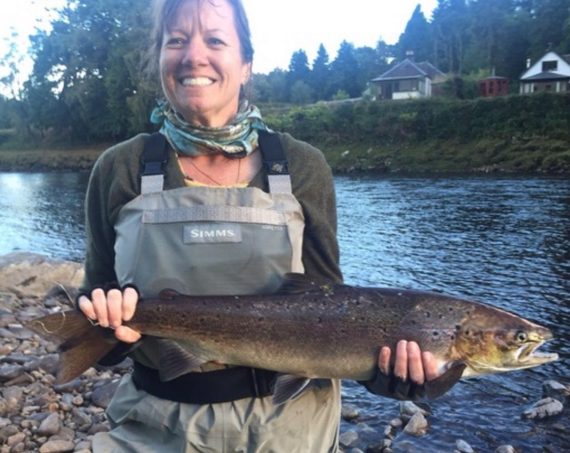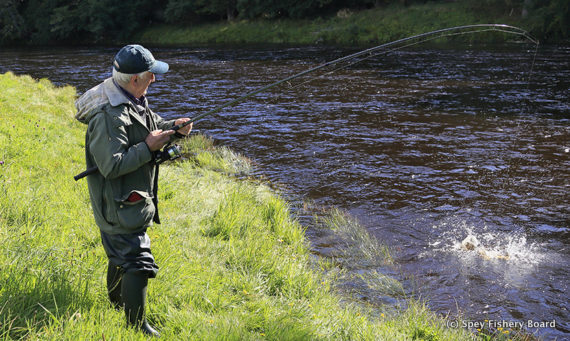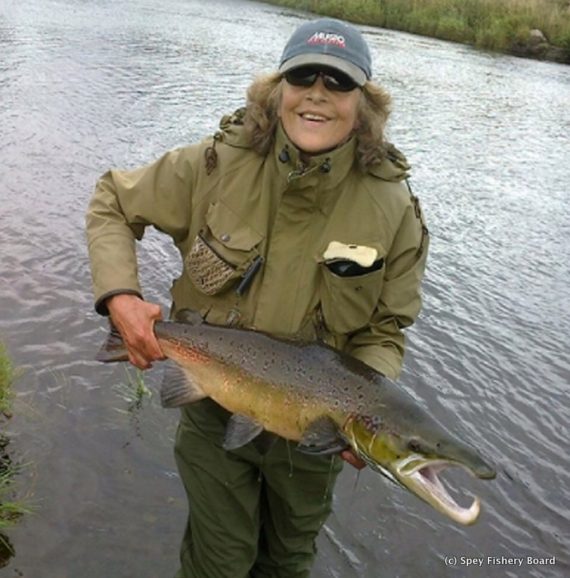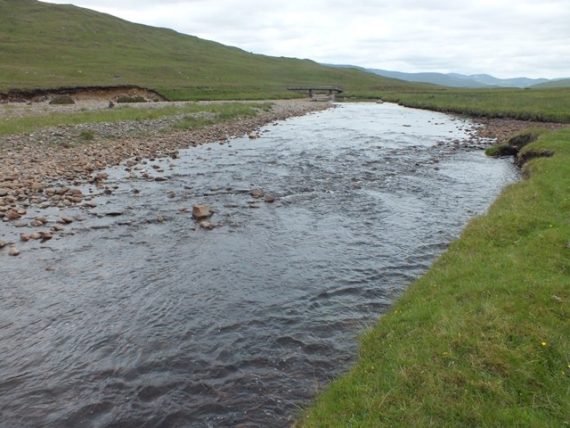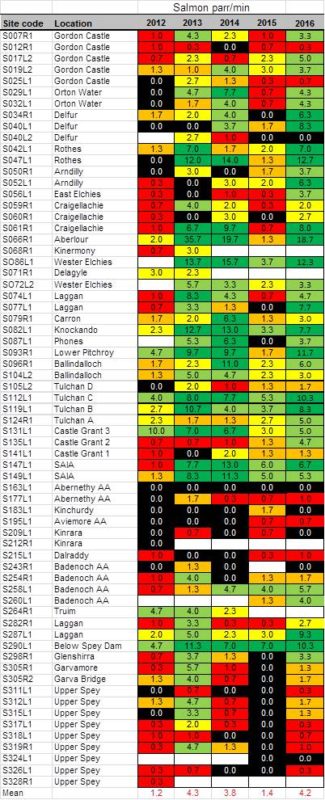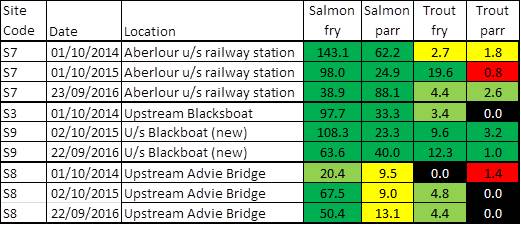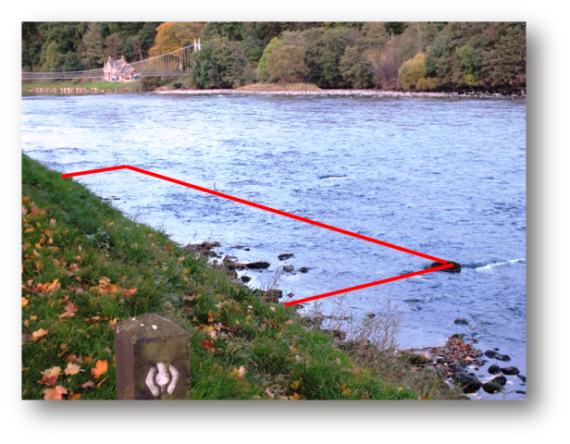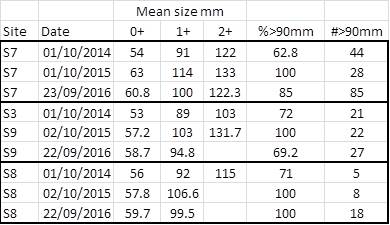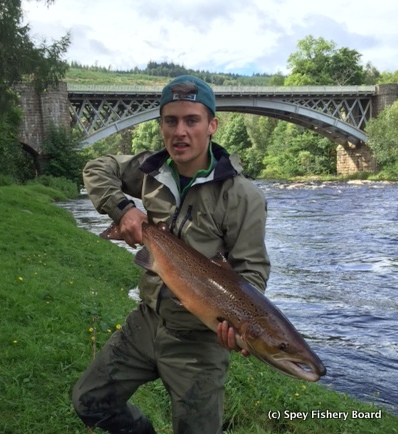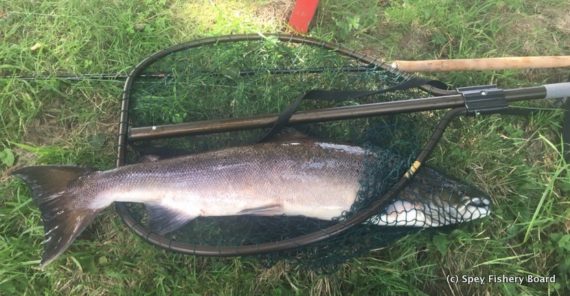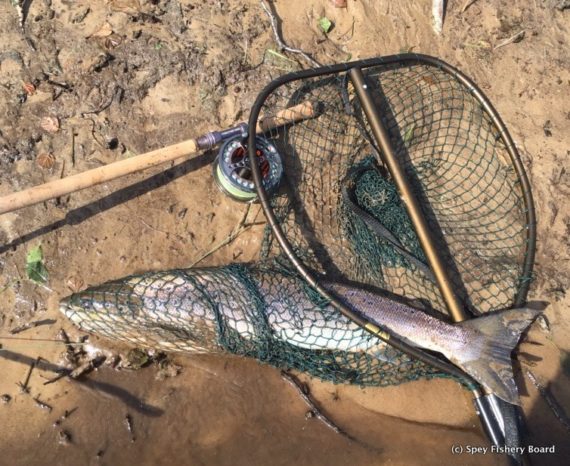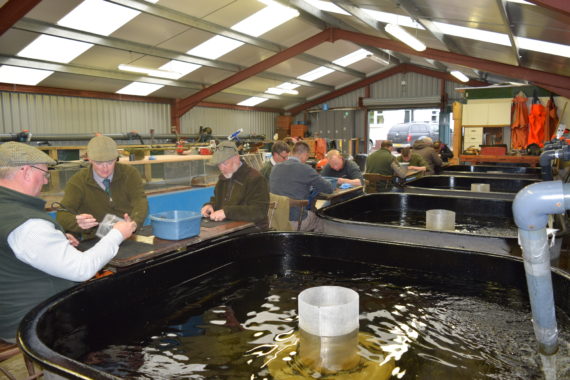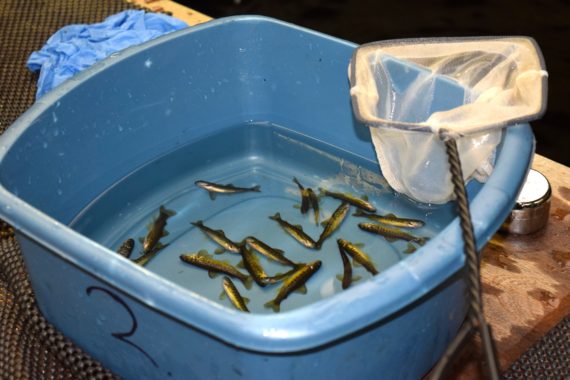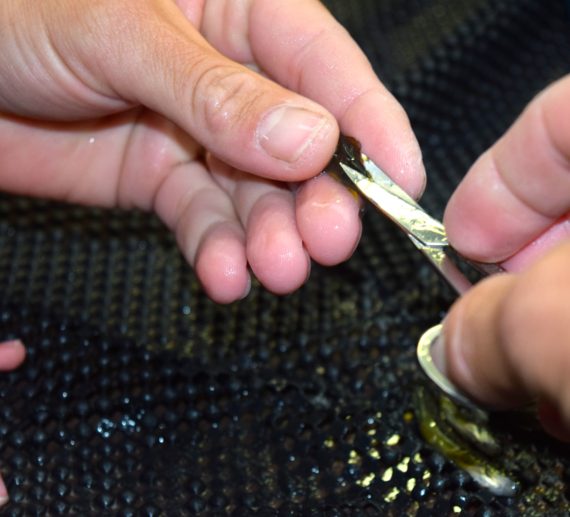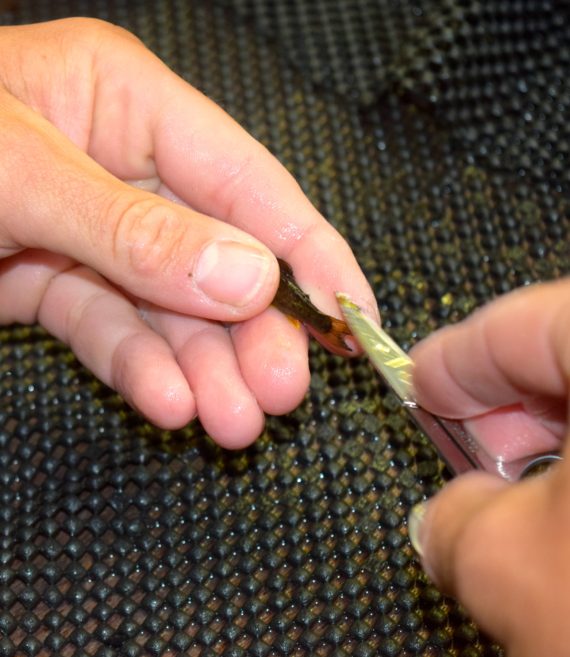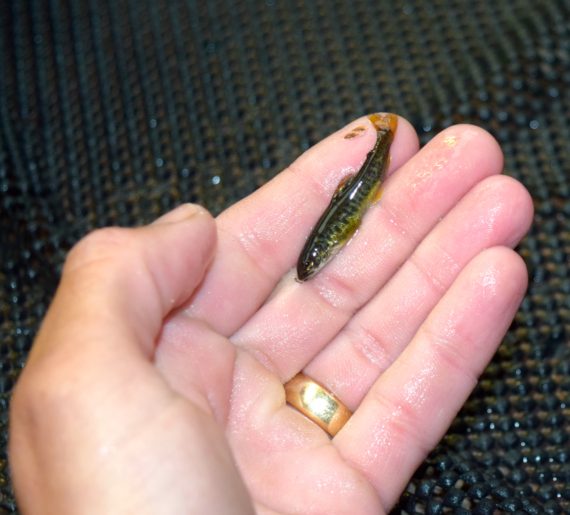As we approach the opening of the 2017 season, I thought it might be fun to look back to the 2016 season
The season opened with the traditional Opening Ceremony at Aberlour. There were two fish caught on opening day, both from Delfur, and both by local angler Graham Ritchie. Graham will have the honour of pouring the whisky into the river this year’s opening ceremony.
The Spey is always a river that starts slowly, February has never been a great month for catches and the records suggest an average of around fifty fish is normal, but considering that not all beats are actually let or fished things are not too bad.
March shows a definite improvement but this would be expected, the days are getting longer, and warmer but let us not forget that we are talking of the Scottish Highlands so warmer and longer have to be taken in some sort of perspective. There are always some days lost to floods caused by snowmelt or heavy rain. Last year the monthly catch was just over the one hundred mark, about two thirds of the average.
April showed as it often does definite improvement although the weather was not perfect, I still remember a wonderful morning at Delfur in late April when I landed two fish and lost another as the snow showers were driven upstream by a strong Northerly wind. Would I have swapped it for sitting in front of a warm fire, no!
The river finished with just over four hundred fish almost spot on the average.
Where else would any salmon angler want to be in May but on the river Spey? Temperatures are rising, the birds have returned from their winter holidays and have paired up, the trees are green and the valley is alive. It is time to get rid of the sinking lines and big flies and concentrate on smaller flies and lines that cast more easily. With the flies fishing closer to the surface you can also get a visual notification of the fish taking. Catches, by now catches were starting to build, word was out the Spey was fishing well! The month finished with just over one thousand fish and again slightly above average.
June, another month in which there is nowhere better in the whole world to be. It is not only the quantity of the fish but also the quality. The majority of the fish are into double figures, some in the high teens and the odd one around the twenty-pound mark. These fish do not give up easily and it is not unusual to see the backing on your reel from time to time. Last year I noted more days were lost to flood in June than in March but even so it was one of the best Junes since the fifties. The Spey ended up with just shy of two and a half thousand fish for the month. This is almost a thousand up on the average.
In July after the excellent last two months expectations were high. Some who should have known better were getting carried away and predicting bumper catches. Those who have been salmon fishing all their lives were less effervescent. If the grilse had turned up in any strong numbers, the former would have been correct but as they didn’t the pessimists were proved right. The river finished July with just about seventeen hundred fish landed. A little above the average, but after June a little disappointing!
August continued the trend. The numbers of fresh fish entering the river was not as it was in years gone by. However visiting anglers could not be disappointed everywhere they looked they could see fish, every pool was stuffed with them but they did not seem to be greatly interested in taking a fly. The weather did not help, the river stayed low, in fact August was the first time since the start of the season that there were no spates. The final tally was close to thirteen hundred fish someway below on the average.
September continued the same pattern. Anglers commentating that they had never seen so many fish in the river, surely a great sign for the future of the Spey. The weather stayed benign, great for the farmers taking in their harvests but not so great for the visiting angler. It was the last week of the season before there was a significant rise in the water; most beats showed a flurry of activity but after such a great season September was something of an anti-climax. Catches were around seven hundred and fifty.
The post Season Review 2016. appeared first on Spey Fishery Board.
Spey Fishery Board

